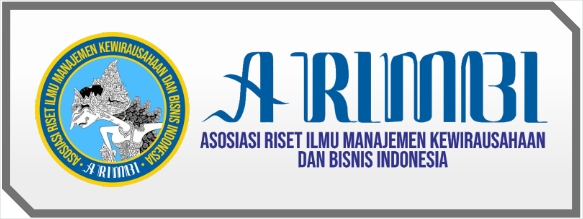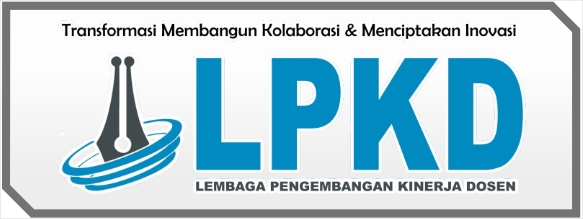Financial Literacy, Financial Technology and Saving Behavior
DOI:
https://doi.org/10.55606/iceb.v1i2.198Keywords:
Financial literacy, Financial Technology, Saving BehaviorAbstract
This research aims to examine the direct and indirect effects of financial literacy on saving behavior through financial technology as a mediating variable. Further, this research uses a quantitative approach with path analysis. This research picked millennial workers in Kendari City, Southeast Sulawesi, as sample of the research. Therefore, the results revealed that financial literacy directly has a significant effect on financial technology and saving behavior then, financial technology also has a significant positive effect on saving behavior. However, financial technology does not able to mediate the relationship between financial literacy and saving behavior significantly. This indicates that financial technology has not provided good facilitation for millennials, especially for helping them in looking the appropriate savings products their needed.
References
Ajzen, I. (1991). The theory of planned behavior. Organizational Behavior and Human Decision Processes, 50(2), 179–211. https://doi.org/10.1016/0749-5978(91)90020
Azzahraa, T., & Kartini. (2022). Pengaruh Financial Knowledge dan Financial Attitude Terhadap Financial Management Behaviour. Selekta Manajemen: Jurnal Mahasiswa Bisnis & Manajemen, 2(1), 78–91. https://doi.org/10.29313/bcsbm.v2i1.422
Bank OCBC NISP. (2022). Financial Fitness Index 2022.
Chen& Volpe. (1998). An analysis of personal financial literacy among college students. Financial Services Review, 7(2), 107–128. https://doi.org/10.1016/s1057-0810(99)80006-7
Choden, T., Wangdi, D., Tenzin, J., Khandu, P., & Dema, P. (2021). Impact of Financial Literacy on Saving Behavior among the III Year Students of Four Colleges under Royal University of Bhutan. International Journal of Innovative Science and Research Technology, 6(12), 350–364.
Davis. (1989). Perceived Usefulness, Perceived Ease of Use, and User Acceptance of Information Technology. Management Information Systems Research Center, University of Minnesota Is Collaborating with JSTOR to Digitize, Preserve and Extend Access to MIS Quarterly., 13(3), 319–340. https://doi.org/10.5962/bhl.title.33621
Delafrooz& Paim. (2011). Determinants of saving behavior and financial problem among employees in Malaysia. Australian Journal of Basic and Applied Sciences, 5(7), 222–228.
Hijir, P. S. (2022). Pengaruh Literasi Keuangan Terhadap Perilaku Keuangan dengan Financial Technology (Fintech) Sebagai Variabel Intervening Pada UKM di Kota Jambi. Jurnal Manajemen Terapan Dan Keuangan, 11(01), 147–156.
Ismail, S., Koe, W.-L., Halim Mahphoth, M., Abu Karim, R., Yusof, N., & Ismail, S. (2020). Saving Behavior Determinants in Malaysia: An Empirical Investigation. KnE Social Sciences, 2020, 731–743. https://doi.org/10.18502/kss.v4i6.6639
Kamel & Hasan. (2003). Assessing the Introduction of Electronic Banking in Egypt Using the Technology Acceptance Model. January 2003, 1–25. https://doi.org/10.4018/978-1-59140-061-5.ch001
Kotler, P. (2012). Marketing management/Philip Kotler, Kevin Lane Keller. Pearson Education International.
Lusardi, A., & Mitchell, O. S. (2014). The economic importance of financial literacy: Theory and evidence. Journal of Economic Literature, 52(1), 5–44. https://doi.org/10.1257/jel.52.1.5
Modigliani & Brumberg. (1954). Utility Anallysis and the Consumption Function: An Interpretationof Cross Section Data. Rutgers University Press.
Morgan, P. J., & Long, T. Q. (2020). Financial literacy, financial inclusion, and savings behavior in Laos. Journal of Asian Economics, 68(July). https://doi.org/10.1016/j.asieco.2020.101197
Morgan, P. J., & Trinh, L. Q. (2020). FinTech and Financial Literacy in Vietnam. ADBI Working Paper Series (No.1154), 1154, 1–23.
Nguyen, V. T., & Doan, M. D. (2020). The Correlation between Financial Literacy and Personal Saving Behavior in Vietnam. Asian Economic and Financial Review, 10(6), 590–603. https://doi.org/10.18488/journal.aefr.2020.106.590.603
Nurrohmah, R. F., & Purbayati, R. (2020). Pengaruh Tingkat Literasi Keuangan Syariah dan Kepercayaan Masyarakat terhadap Minat Menabung di Bank Syariah. Jurnal Maps (Manajemen Perbankan Syariah), 3(2), 140–153. https://doi.org/10.32483/maps.v3i2.36
Ouma et. al. (2017). Mobile financial services and financial inclusion: Is it a boon for savings mobilization? Review of Development Finance, 7(1), 29–35. https://doi.org/10.1016/j.rdf.2017.01.001
Peiris, T. U. I. (2021). Effect of Financial Literacy on Individual Savings Behavior; the Mediation Role of Intention to Saving. European Journal of Business and Management Research, 6(5), 94–99. https://doi.org/10.24018/ejbmr.2021.6.5.1064
Resty, N. N. H., & Hidayat, A. (2021). Factors Affecting Millennial Customers’ Savings Intention in Islamic Banks. European Journal of Business and Management Research, 6(4), 116–122. https://doi.org/10.24018/ejbmr.2021.6.4.949
Rohmah, R. M., & Gunarsih, T. (2021). Pengaruh Literasi Keuangan Dan Fintechterhadap Inklusi Keuangan Pada Masyarakat D.I.Yogyakarta. Seminar Nasional Unriyo, 3(1), 2019–2226.
Sartika, D., Widyastuti, A., & Citra Sondari, M. (2021). Literasi Keuangan Bagi Generasi Millennial Di Era Pandemi Covid-19. Dharma Bhakti Ekuitas, 5(2), 535–542. https://doi.org/10.52250/p3m.v5i2.357
Varlamova, J., Larionova, N., & Zulfakarova, L. (2020). Digital Technologies and Saving Behavior. Proceedings of the International Scientific Conference “Far East Con” (ISCFEC 2020), 128(Iscfec), 1661–1667. https://doi.org/10.2991/aebmr.k.200312.229
Widjaja, I., Arifin, A. Z., & Setini, M. (2020). The effects of financial literacy and subjective norms on saving behavior. Management Science Letters, 10(15), 3635–3642. https://doi.org/10.5267/j.msl.2020.6.030
















